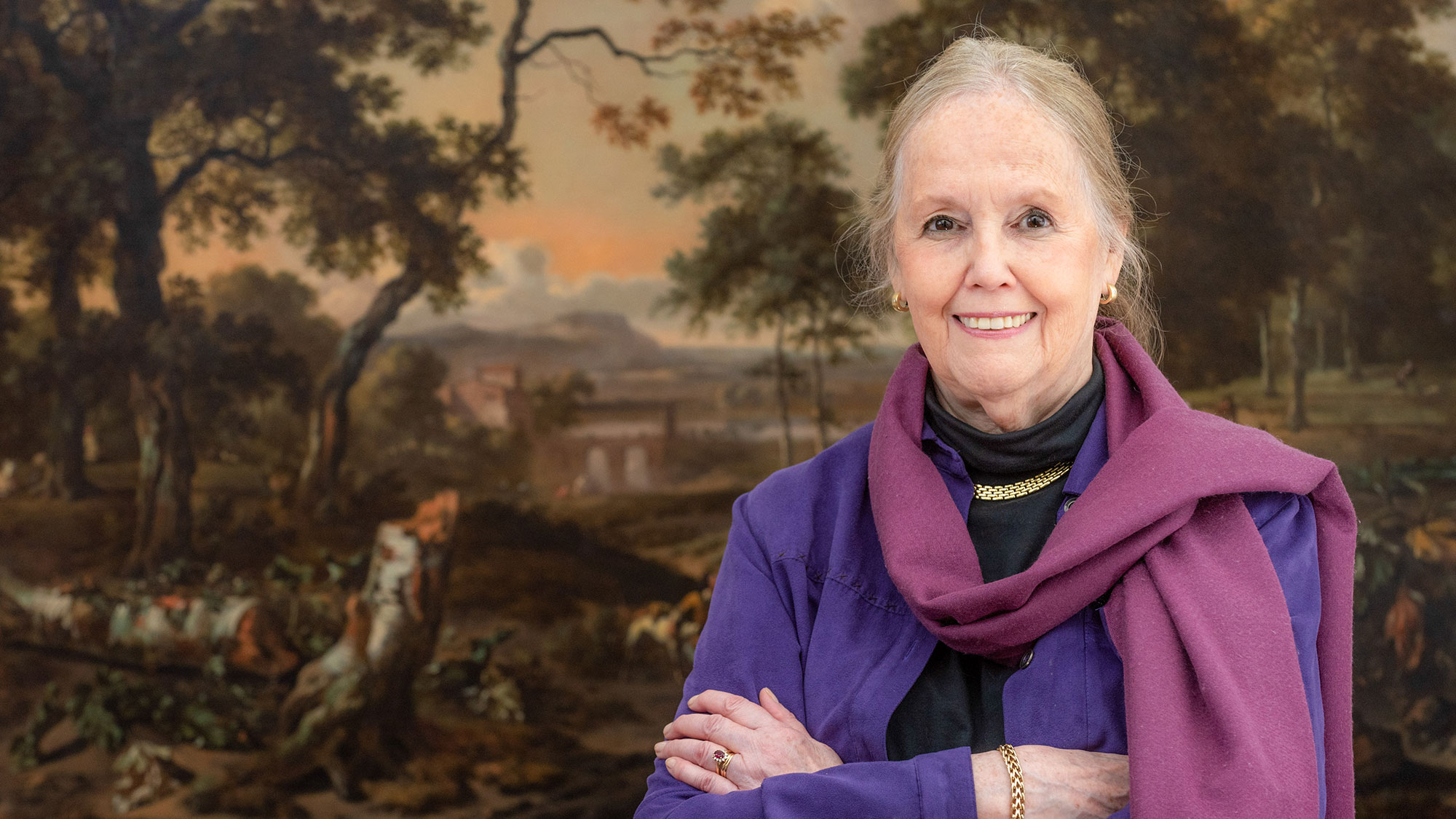Over the past four decades, Professor of Art Susan Donahue Kuretsky ’63 has taken thousands of Vassar students on journeys through the Netherlands, Belgium, Germany, and much of the rest of the world, helping them discover and explore the works of countless painters and printmakers.
Kuretsky will retire from teaching at the end of the spring semester, but she says she’ll stay close to Vassar and looks forward to keeping in touch with her colleagues, friends and former students, a remarkable number of whom have gone on to become professionals and scholars in the field. As a tribute to Kuretsky, one of those former students, Elizabeth Nogrady ’99, Andrew Mellon Curator of Academic Programs, has curated an exhibit, Master Class: Northern European Art 1500-1700 from the Permanent Collection, which will be on display at the Frances Lehman Loeb Art Center from April 27 to Sept. 2. Nogrady and a group of other former students have compiled a collection of their writings on works of art as
Q. How did you land your teaching job here at Vassar?
A. After I graduated from Vassar, I completed my PhD at Harvard and then taught at Boston University. While I was there, I got a call from my graduate school adviser, who told me that Vassar was looking for a specialist in northern Renaissance and Baroque art and said he’d recommend me if I were interested. I took about three seconds to give him an affirmative answer.
Q. What do you remember about teaching your first class?
A. Then and now, all of us in the Art Department lecture on our areas of specialization in Art 105 (our team-taught survey course on the history of art). When it was my turn to begin a sequence of lectures, nearly all the professors who had taught me – people whom I had admired, even revered – were lined up there in the back row. It’s indescribable to convey the level of apprehension behind one’s first words, knowing that they all had to be wondering, “How did she turn out?”
Q. Obviously, you got over those first-day jitters.
A. Teaching at Vassar has been a delight because the students are bright, original, imaginative and endlessly curious. The main focus of my work is Dutch art of the 17th Century, and we all like to teach what we know. But over time, I’ve come to realize how much fun it is to venture outside that comfort zone, by putting myself in situations in which the students may know more about certain aspects of a subject than I do. A seminar called “Art and Science in the Age of Vermeer” was pure heaven because the class included both art history and science majors – all sharp observers but in different ways. I learned as much as they did.

Q. You’re well known for taking your students out of the classroom and teaching them to “go to the source” of the works they are studying, at the Loeb or other museums. Why is that such an important component of your teaching style?
A. I’m certainly not alone in this, since we have an exceptionally fine art collection right next door which all of us regularly use in Art 105 and other courses too – with great thanks to the collaboration of the museum staff. There’s no substitute for looking at original objects and going back to study them again and again, slowly, over time. Today’s world is flooded with barrages of ephemeral digital images, so many of them vacuous and empty of content, inspiration or meaning. Art will keep us centered, connected and human, if anything can.
Q. You’ve been teaching at Vassar for 42 years, but you obviously still have the passion and energy for the job. Why did you decide to retire?
A. Really? 42 years? That’s an astonishing length of time, and I’ve never actually computed it myself. I know I will greatly miss the day to day serious conversations and humorous exchanges with colleagues, who are also friends, as well as the students. But you know when it’s time – time to recharge the passion and energy by finding more time and space for writing or just thinking beyond the constant press of a regular schedule.
Q. What was your reaction when you learned that Elizabeth Nogrady and other alums were planning a tribute celebrating your work at Vassar?
A. Deeply honored, and touched. And startled – all the more because, like all art historians, my field of operations is most often a darkened room with Rembrandt or Vermeer in the foreground and my voice in the background, which seems most natural. I do want to say that acknowledgments coming in my direction are greatly appreciated but I must give the same back to Vassar in more than equal measure. To quote my own adored art history professor here, Agnes Rindge Claflin, “This is the only profession in which you can give away everything you have.”
